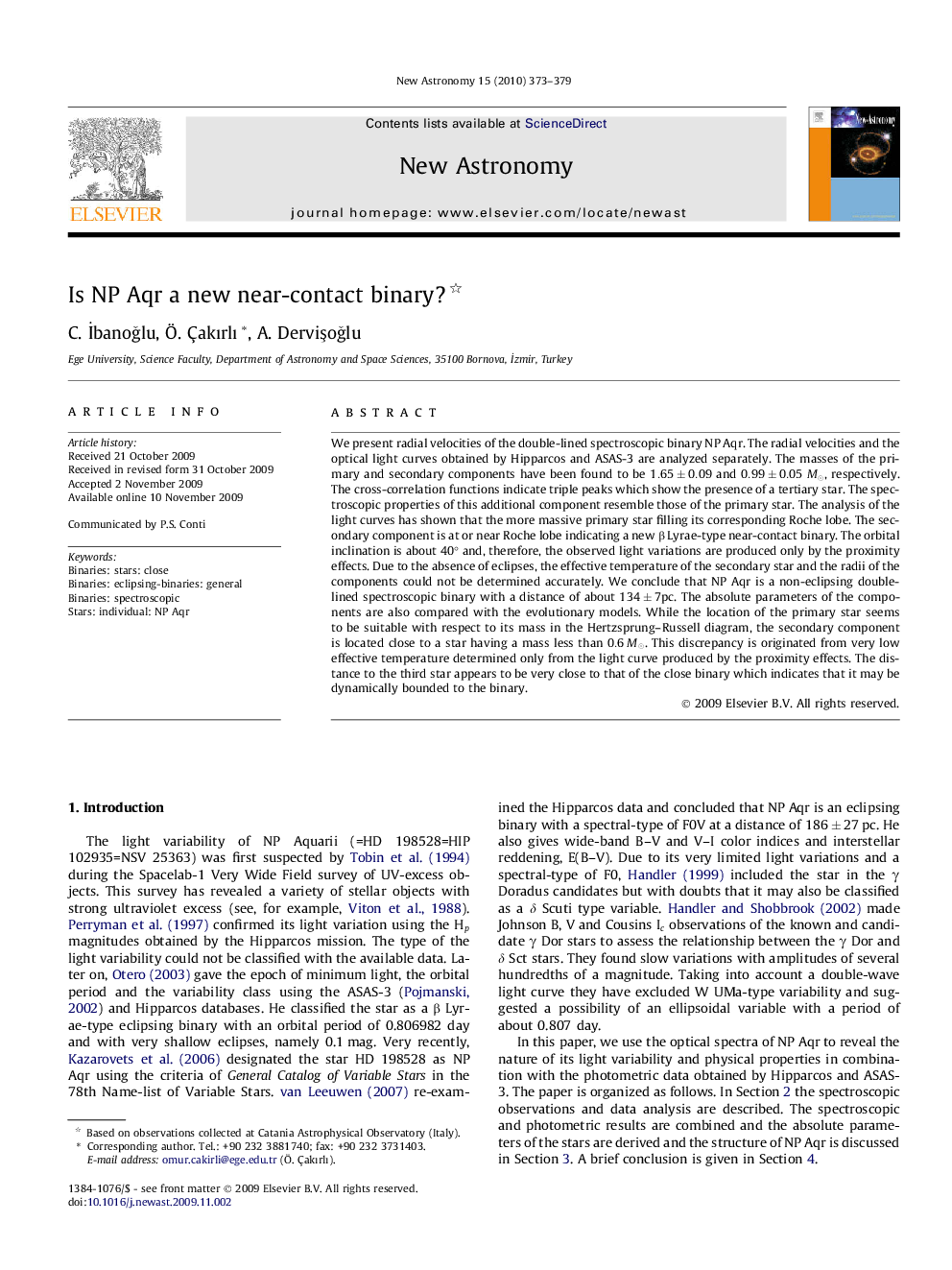| Article ID | Journal | Published Year | Pages | File Type |
|---|---|---|---|---|
| 1779738 | New Astronomy | 2010 | 7 Pages |
We present radial velocities of the double-lined spectroscopic binary NP Aqr. The radial velocities and the optical light curves obtained by Hipparcos and ASAS-3 are analyzed separately. The masses of the primary and secondary components have been found to be 1.65±0.091.65±0.09 and 0.99±0.05M⊙, respectively. The cross-correlation functions indicate triple peaks which show the presence of a tertiary star. The spectroscopic properties of this additional component resemble those of the primary star. The analysis of the light curves has shown that the more massive primary star filling its corresponding Roche lobe. The secondary component is at or near Roche lobe indicating a new ββ Lyrae-type near-contact binary. The orbital inclination is about 40° and, therefore, the observed light variations are produced only by the proximity effects. Due to the absence of eclipses, the effective temperature of the secondary star and the radii of the components could not be determined accurately. We conclude that NP Aqr is a non-eclipsing double-lined spectroscopic binary with a distance of about 134±7pc134±7pc. The absolute parameters of the components are also compared with the evolutionary models. While the location of the primary star seems to be suitable with respect to its mass in the Hertzsprung–Russell diagram, the secondary component is located close to a star having a mass less than 0.6M⊙. This discrepancy is originated from very low effective temperature determined only from the light curve produced by the proximity effects. The distance to the third star appears to be very close to that of the close binary which indicates that it may be dynamically bounded to the binary.
